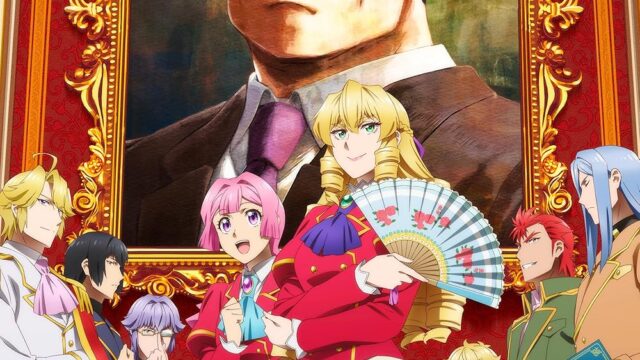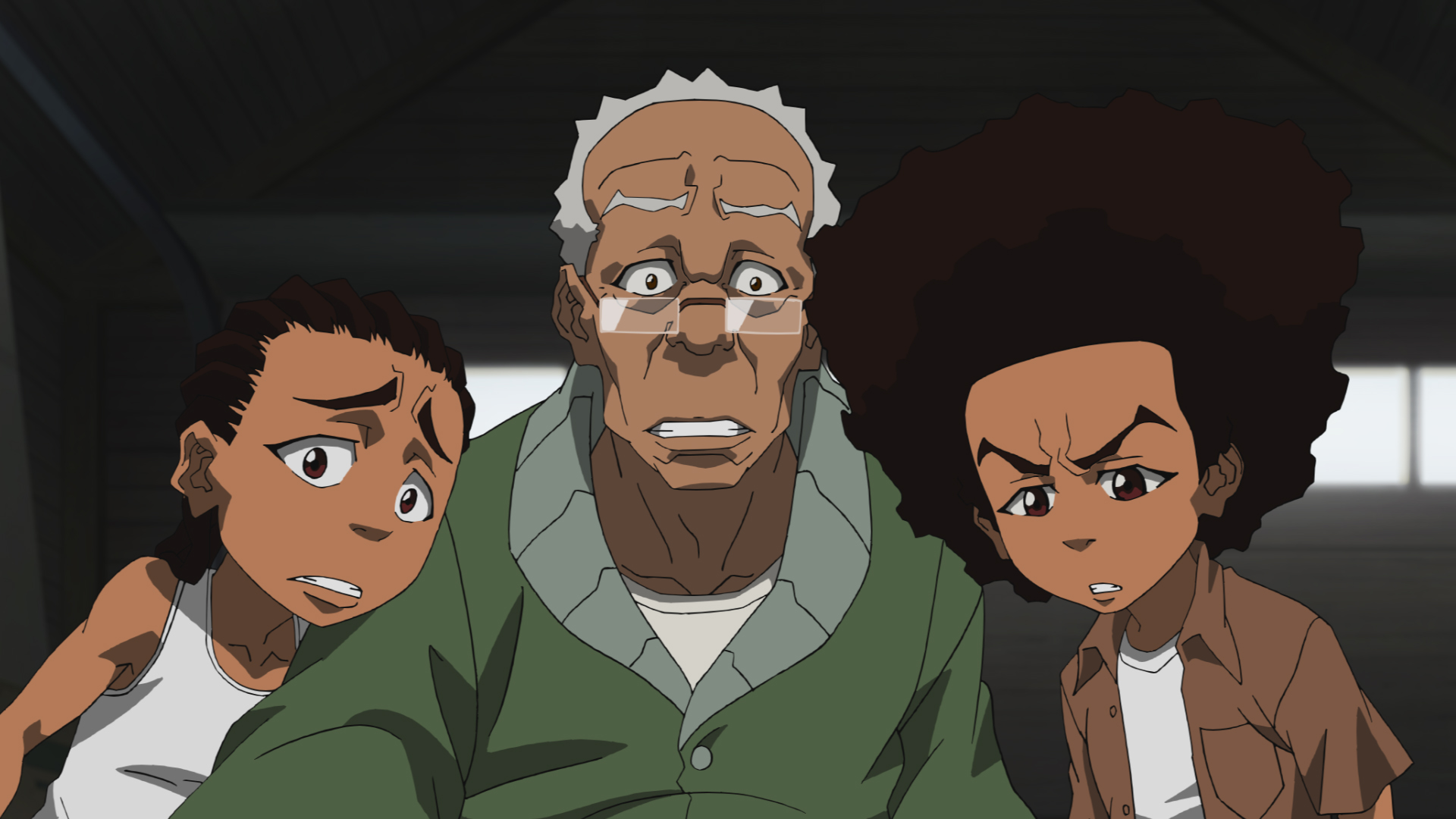Season Review: Lazor Wulf Season One
A wulf-pack of characters, a wolf-pack of episodes.
Think of an Adult Swim show. No matter what it is, it’s zany, out-of-the-box and probably unique in style. Lazor Wulf is no different. In fact, considering that the idea for the show literally came from a dream the creator (Henry Bonsu) had about “making a cartoon about a wolf with a laser on his back,” it’s no wonder that the show gives off a one-of-a-kind vibe. Lazor Wulf is as simple as the show canonically makes itself out to be (“Anyone knows the premise of the show?” “A wolf with a laser.” “I’m sold.”) Yet simultaneously, it’s just a touch more complicated than that.
Lazor Wulf may be about a wolf with a laser, but it’s also about him and his crew (who may or may not be wolves, and may or may not have weapons) going about normal, average activities, only to have them turn into surreal adventures. Given that this series was spawned from the fabric of dreams itself, is it possible that things could have gotten too surreal to follow? Or was it all a dream come true?
Let’s review.
Animation/Art Style
Think of any Adult Swim show (again.) There’s this dingy, dark kind of aesthetic to a lot of its series — animated and not. Right off the bat, this is where Lazor Wulf differs. It hits the viewer with a chill pastel palette that — when combined with the art style — can even seem a bit vaporwave-y at times. While the relaxing colors are reminiscent of a dream, the simplicity of the art style can wind up drowning out the important characters/objects in a scene. This has a lot to do with how everything — whether it be a background element or the main character — has the same outline. There’s not much to differentiate between the two, and it would definitely help main elements look less washed out/stand out more if there was an outline or color difference that separated the two.
Enough of that, though. The way Lazor Wulf uses a sort of typography style to emphasize a gag is both distinctive and fun. There’s also the running gag of the background signs, which are usually even meta. Lazor Wulf likes to use this sort of “advertisement” aesthetic when it comes to emboldening a joke phrase or relevant thing the characters are discussing — and it definitely adds to the show’s original brand of humor.
On top of this, there are these short bursts of varied animation styles. Throughout the episodes, any viewer can expect to see types such as retro video game animation and tastes of watercolor — mixed in with the classic surreality of the show’s central style itself.
Plot
There’s no over-arching plot when it comes to Lazor Wulf — only individual adventures with reoccurring characters. Most of the plots turn mundane actions into fantastical antics. It’s very similar to Regular Show in a lot of ways!
Lazor Wulf has a very relaxed yet clever sense of humor, where a majority of the comedy reliant on visuals to back it up. It’s not a bust-a-gut laughing kind of show, but it doesn’t have to be. It’s designed to kick back to — a series flavor that sets itself apart from a lot of Adult Swim shows. With its oddly wholesome dialogue/characters/visuals, it’s the perfect show to hang out to and get a few chuckles out of — and, for viewers who live in certain states where The Marijuana is legal (and illegal, fuck it, we ain’t cops) the aesthetics would probably combine to create the Ultimate Chill.
Characters
Getting into a show called “Lazor Wulf” may make one ask the question: “Okay, when does the wolf use the laser?” The answer is pretty much never — save for an occasional, nonchalant zap. All the wolves basically open-carry in this fictitious world, yet they rarely ever resort to violence (unless it’s in the form of something like the game Crossfire.) In fact, no one ever even talks about the giant weapons that are plainly strapped to them. It’s just a steadily growing, meta-joke that’s only fully realized when the season is over. It holds true to the surreality of everything, but it’s hard not to ask why such chill characters are weaponized at all.
Lazor Wulf himself is the brains of his friends — without ever really trying to be. His nonchalant attitude to problem-solving makes him feel like he’s a character who can do anything, which adds to the humor. The closest he got to losing his chill was when it came to proving the Earth was round to a bunch of nonbelievers (and, of course, the whole deadbeat dad thing.)
Stupid Horse gets beaten down a lot, but it starts to seem more like beating a dead horse after a while (badum tsss.) When he and Lazor Wulf teamed up in “Keep It Moving,” it was a nice change of pace. Stupid Horse may be stupid, but he is the source of humor for the show. Every town needs a fool!
Canon Wulf’s subtle insecurities (as mentioned by his father) make him hilarious in juxtaposition with how extroverted he is. Strip club owners have feelings, too.
King Yeti didn’t have too much substance, other than his talents and father flashback in “That Was Today. This Is Tomorrow.” With all hope, we’ll get to see more Blazor Wulf next season — her business-as-usual attitude is great in every scenario (also, At the End of the Day was one of the best episodes because of her.)
Aside from this, God as a reoccurring character/antagonist is gold. Still not sure who Wallace is supposed to be (Jesus? Possibly?) It doesn’t really matter much, though.
Sound Design
The music in this show is superb. Pretty much every sequence delivers a digitally delightful tune to the ear. It would be a disservice to not release the music separately, as it jives with the show’s overall tone super well. Aside from this, there’s a charming sense of “classic cartoon” when it comes to Lazor Wulf’s sound design. The constant use of cute sound effects makes it reminiscent of a classic toon that anyone could curl up with. It also enhances the aforementioned “oddly wholesome”-ness of the show.
Voice acting wise, the way Vince Staples, Andre Pascoe, Ettore Ewen, Reginald VelJohnson, Quinta Brunson, D.R.A.M., and kittie kaBoom all team up alongside Henry Bonsu pretty much makes the show what it is. Everyone has mastered the art of being animated while maintaining a relaxed tone.
There’s no topping the performance of J.D. Witherspoon, though, who did an outstanding job of playing Stupid Horse. The dips from being cartoony and bubbly to suddenly switching over to an intense narrator voice show the raw talent he has. It would be great to see him in future roles!
Did it do its genre justice?
Lazor Wulf is a horse of its own color (or, wolf. Or, the horse works too, actually.) It may be a comedy, but if a show could be considered “lofi,” it would be that. Although its debut has ended in Spring, it’s managed to encapsulate a feeling of Summer, somehow. Cool, yet full of warmth — a lot of love went into this show, and it definitely shines through as a defining feature.
Hopefully, we’ll see Lazor Wulf back for a second season. After all, Stupid Horse and King Yeti are still stuck in that vacuum.

























"There are also other characters that come and go (also owned by the Warner Bros. Discovery conglomerate media company)."
Huh. Is that just referring to other characters from the show itself, or is this implying that the new season is going to have cameos from other WBD IPs